Living in the Pacific Northwest, we don’t get much lightning here; but even so, as I’ve purchased more expensive radio equipment, I’m still aware of the potential for lightning and smaller electrostatic buildup causing damage. To prevent that, I’ve wanted to have an entry panel and box that was practical and nice. It took about 1 & 1/2 years to slowly purchase parts and finally get to the project.
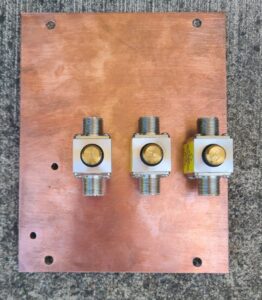 Since the lightning arresters were the most expensive portion of the project, I purchased over time three of Alpha Delta’s Transi-Trap Surge Protectors are gas surge arresters. I also went to a local metal supply company and purchased a thick sheet of copper. Using a piece of cardboard first, I mapped out and mounted the arresters to figure out locations. I wanted them to take as little room as possible, but leave room to get fingers between them easily to attach cables.
Since the lightning arresters were the most expensive portion of the project, I purchased over time three of Alpha Delta’s Transi-Trap Surge Protectors are gas surge arresters. I also went to a local metal supply company and purchased a thick sheet of copper. Using a piece of cardboard first, I mapped out and mounted the arresters to figure out locations. I wanted them to take as little room as possible, but leave room to get fingers between them easily to attach cables.
The box was more difficult. I found a nice one, but after it arrived, discovered it was too small. The bend radius for cables is very important–especially if you run a lot of power through cable. I often run 500 watts, so I after looking up the bend radius of my RG-8x cable, I made a wire template with a quarter of an inch larger radius, just to be on the safe side.
What I forgot, however, was to also consider that the PL259’s and reducers take up another 1.5 inches on each side–making the space needed 3 inches taller, so I needed another box.
I thought about buying something cheap or used from an electrical installation, but wanted it water tight and look nice (for the neighbors as well). “Cheap ham syndrome” is where a ham spends more time and actually more money on a DIY project trying to be cheap, buying or finding used parts that then need extra parts, paint or modifications to fix or adapt to make the project work well.
To avoid this, all my parts were what I needed and wanted–like making sure the box had base plate standoffs. Adding them myself would put more holes in the box and the outside wall, or it would require screwheads or nuts on the back of the box to hold the standoffs in place, which would cause the box to stick out more and make it harder to make water tight.
I found a nice metal box that was 12″ x 10″ x 6″. It already had a base plate with stand offs, so I replaced the base plate with my copper plate. I chose to put a wall hole in the back instead of adding something else on the wall for cable entry.
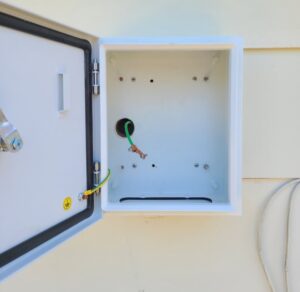
After mounting the box with the plate, I made sure everything was labeled well.
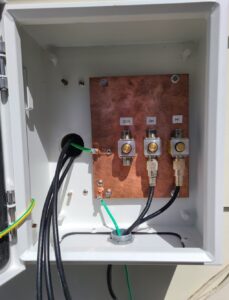
I put Penetrox (a non-toxic oxide inhibitor joint compound and lubricant) on every connector and every base plate screw. I also made a special face plate for the inside of the house by drilling holes in a blank electrical face plate.

After sealing the box to the outside, I’m pleased with the final results:
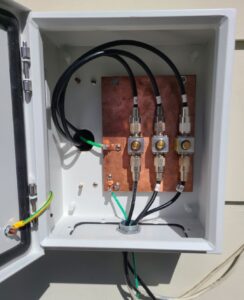

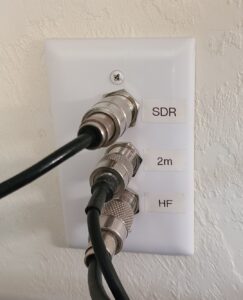
![]()
